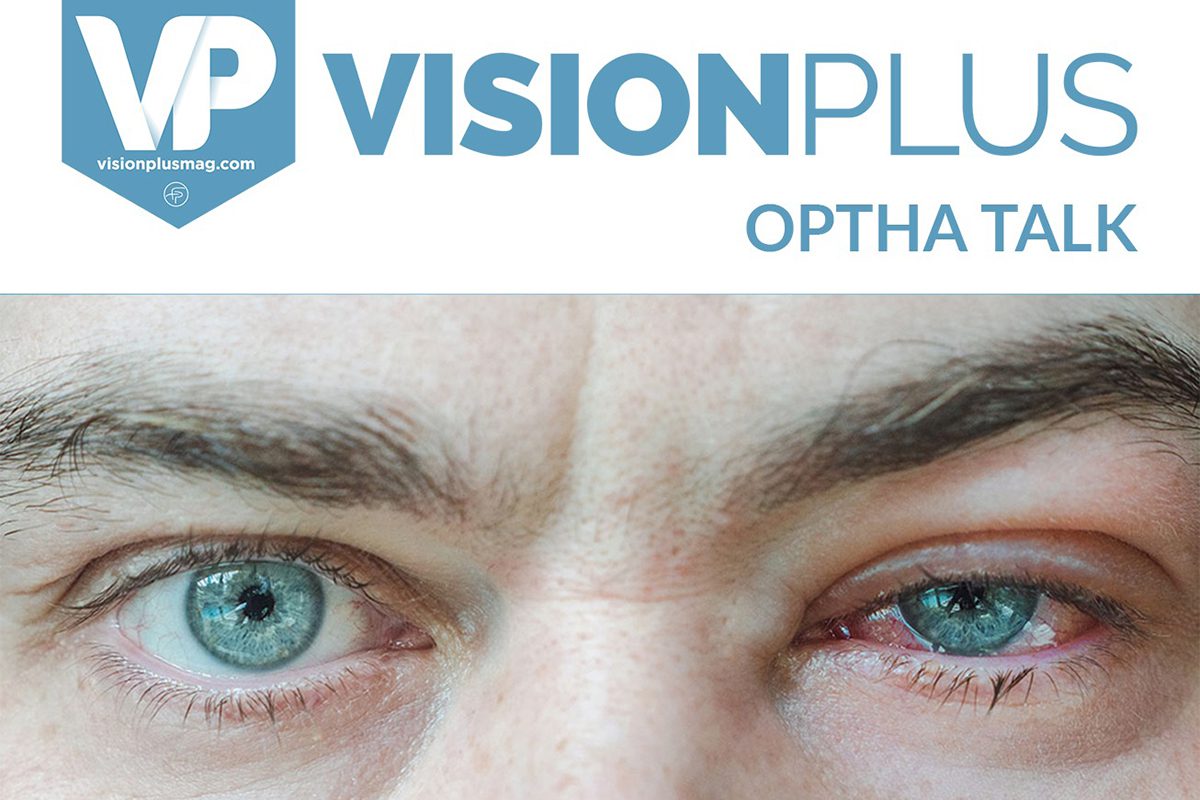People with blepharitis may experience swollen, red and sore eyelids, often accompanied by a burning sensation. Crusty, dandruff-like flakes or oily particles may also form at the base of the eyelashes. Though not generally serious, blepharitis can be chronic, with symptoms that come and go, requiring ongoing management. This condition can make daily life uncomfortable and pose challenges to maintaining good eye health.
What Causes Blepharitis?
Blepharitis occurs for several reasons, primarily due to the presence of excess bacteria on the skin or issues with the oil glands in the eyelids. Everyone has bacteria on their skin; however, certain people may have a higher concentration at the base of their eyelashes, leading to an overgrowth. This bacterial buildup can create dandruff-like flakes along the lash line.
People with certain skin conditions, such as oily skin, rosacea or dandruff, are more susceptible to blepharitis. Additionally, some cases are linked to Demodex mites, tiny organisms that live naturally in hair follicles, including the eyelashes. In individuals with blepharitis, these mites may overpopulate the lash follicles, worsening the condition.
Issues with the oil-producing glands (Meibomian glands) on the eyelid are also a common cause of blepharitis. These glands secrete an oily substance that helps keep the eye’s surface lubricated. When the glands become clogged, they cannot release enough oil, leading to inflammation and irritation.
Recognising The Symptoms
Symptoms of blepharitis can vary but typically include:
Red, swollen and sore eyelids: The eyelids may feel irritated and tender, especially along the lash line.
Crusting around lashes: Flakes or oily particles often develop at the base of the eyelashes, similar to dandruff.
Burning or stinging sensation: Many people with blepharitis experience discomfort or a gritty feeling in their eyes.
Itching or tearing: The eyes may produce excessive tears as they try to alleviate dryness or irritation.
Light sensitivity: Some people find their eyes are more sensitive to light than usual.
While blepharitis is not sight-threatening, it can lead to complications if left untreated. Chronic cases may cause scarring on the eyelid edges or in more severe cases, damage the cornea, the clear front part of the eye.
Types Of Blepharitis
There are two primary types of blepharitis:
Anterior Blepharitis: This affects the outer part of the eyelid, where the eyelashes are attached. It’s usually caused by bacteria or dandruff-like conditions of the skin.
Posterior Blepharitis: This type affects the inner part of the eyelid, closer to the eye itself, often due to issues with the Meibomian glands. Posterior blepharitis can be more challenging to treat as it’s tied to the oil-producing glands within the eyelid.
Treatment Options For Blepharitis
There is no cure for blepharitis, but with consistent care, symptoms can be managed effectively. Treatment typically involves improving hygiene practices and, in some cases, using medications or other therapies. Here’s a closer look at some treatment options:
Warm Compresses
Applying a warm compress to closed eyelids can help soothe irritation and open up clogged oil glands. This process can help reduce inflammation, loosen crusts and prevent further clogging of the oil glands. For those seeking an in-office solution, some ophthalmologists offer electronic devices that use heat and gentle massage to unclog these glands, providing longer-lasting relief.
Eyelid Hygiene
Maintaining clean eyelids and eyelashes is crucial for managing blepharitis. Cleaning the eyelids daily helps reduce bacteria buildup and removes oily residue and flakes. Regular cleaning keeps bacteria in check, helping to minimise blepharitis flare-ups. Additionally, using antibacterial shampoo on the scalp, eyebrows and hair can prevent dandruff, further reducing symptoms.
Antibiotics
In cases where blepharitis is caused by a bacterial infection, your ophthalmologist may prescribe antibiotics. Antibiotic ointments can be applied directly to the eyelids at bedtime, while some people may require oral antibiotics if inflammation is more severe.
Eye Drops
Artificial tears or steroid eye drops may also be beneficial for reducing redness, swelling and dry eye associated with blepharitis. For patients with chronic cases, ophthalmologists may recommend antibiotic eye drops to improve the function of the Meibomian glands. Steroid eye drops are typically used short-term due to potential side effects, while artificial tears are safe for regular use to relieve dryness and soothe irritation.
Omega-3 Fatty Acids
Some research suggests that omega-3 fatty acids can improve Meibomian gland function, helping to alleviate symptoms of blepharitis. Omega-3s are found in fatty fish like salmon and sardines, but you can also purchase fish oil supplements. Speak with your doctor before starting omega-3 supplements, as they may not be suitable for everyone.
Preventing Blepharitis
There are a few lifestyle tips and preventive measures that can help manage blepharitis symptoms and reduce the frequency of flare-ups:
Adopt a regular cleaning routine: Daily eyelid hygiene helps prevent bacteria buildup and reduce symptoms.
Avoid touching your eyes: This reduces the transfer of bacteria to your eyelids. Replace makeup products: Mascara and eyeliner can harbour bacteria, so replace these products regularly and avoid sharing them with others.
Limit the use of contact lenses: Contacts can trap bacteria and irritate the eyes. Switching to glasses during a blepharitis episode can reduce discomfort.
Manage skin conditions: Treating dandruff, rosacea, or oily skin can help minimise blepharitis symptoms.
When to See a Doctor
If you experience persistent redness, swelling or irritation, see an eye care professional. They can assess the severity of your condition, rule out other eye problems and recommend appropriate treatments. For people with chronic blepharitis, a combination of professional treatments and a daily care routine may provide long-term symptom relief.
While blepharitis can be a frustrating and recurrent condition, adopting the right management techniques can make a significant difference. From consistent eyelid hygiene and warm compresses to supplements and antibiotic treatments, there are many ways to keep symptoms under control. If you suspect you have blepharitis, consult an ophthalmologist to find a treatment plan that’s best for you.












